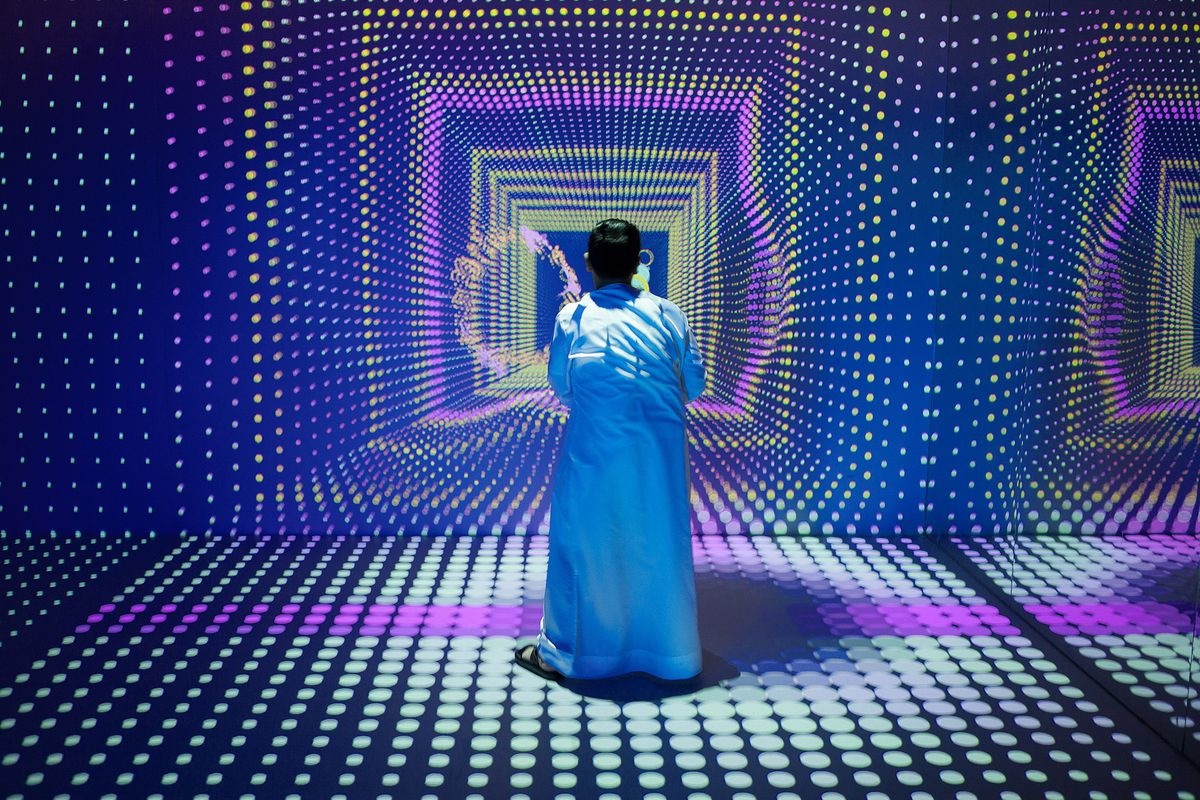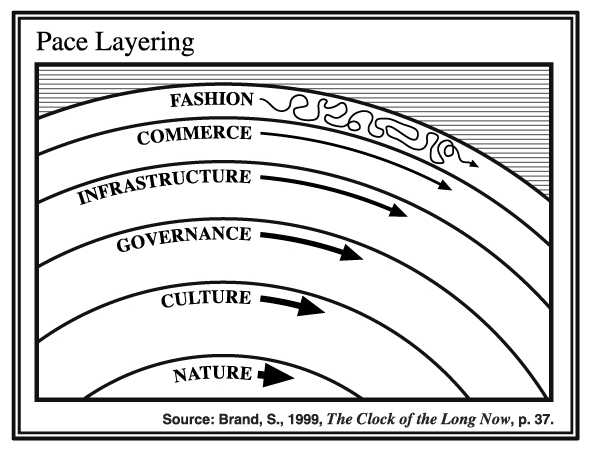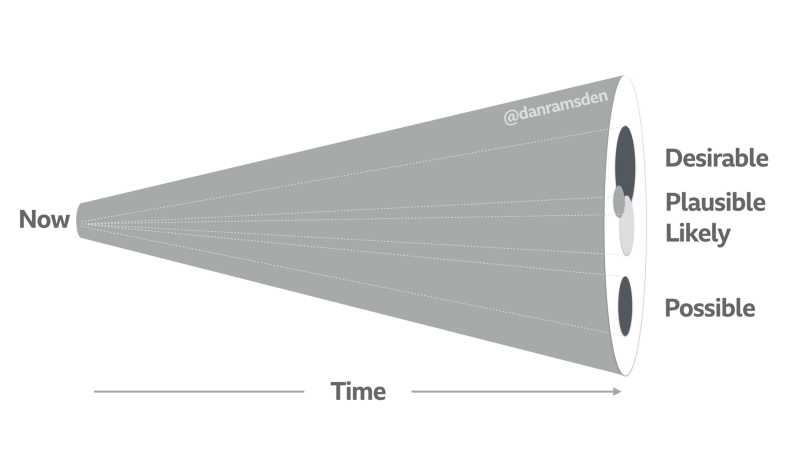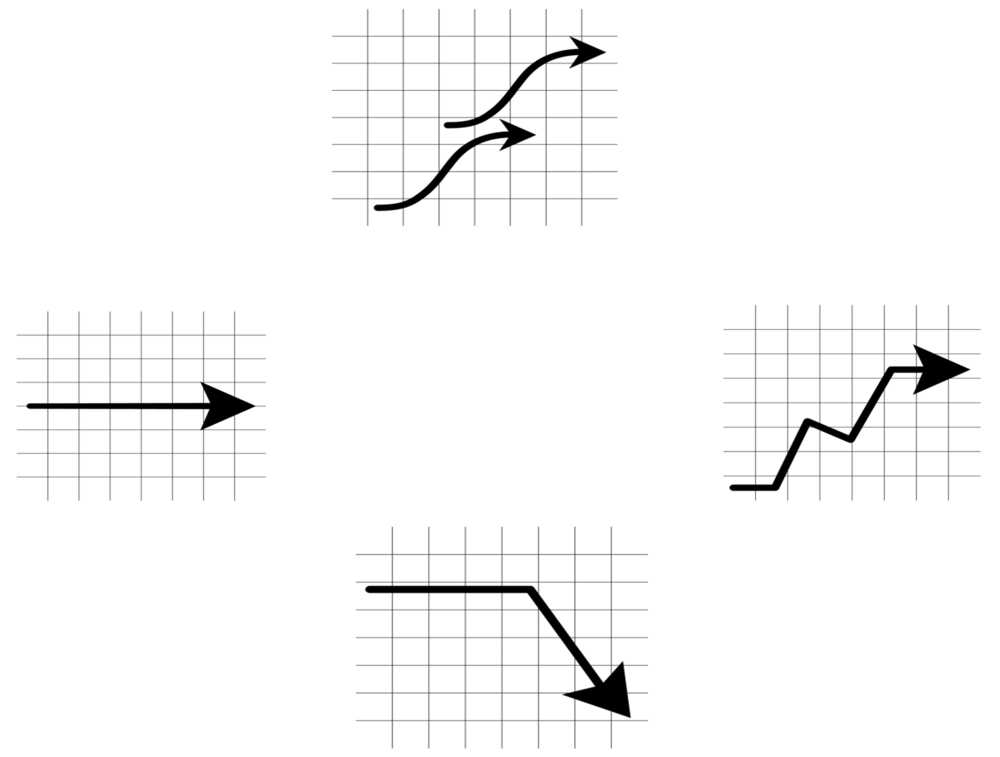

The Tellart future scenario toolset
Paul Skinner is Creative Director at Tellart, a design studio that combines computation (data, sensors, robotics, networks) with traditional materials (wood, metal, glass, textile and ceramics) to build immersive experiences for governments, museums and brands.
In his talk at UNStudio, Paul discussed several models that help Tellart navigate volatility, uncertainty, complexity and ambiguity, and ultimately, to create future scenarios.
Below is a brief summary of some of those models that help guide Tellart’s research.

Pace Layers
Stewart Brand
Stewart Brand’s six-layer framework describes how healthy societies work, showing that different elements (or pace layers) of our society change at different rates, functioning simultaneously but at different speeds. Each layer responds to its adjacent layer, and is influenced by it. The slower layers like nature, the bassline of the model, and culture, are the most powerful, while the faster ones like commerce and fashion seem to attract most of our attention. Stewart Brand first explained this idea in his book, the Clock of Long Now.
“If slow parts are not occasionally frustrating then they’re not doing their job. But if you don’t respect them for that, you don’t know how the world works.” — Brand

Futures Cone
Joseph Voros
Joseph Voros’ model is mostly used for mapping the possibility space. Positioning yourself to the left of the diagram, you have a wide collection of alternate futures that might happen. The central elements of the cone represent the futures that are more likely things to happen, and the dispersed elements represent the things that are least likely to happen, but that we may want to happen (or not). This is a tool often used demonstrate the idea of plurality, as there could be many different futures that could happen. It is up to you to determine which future you should steer towards, how you could get there, and what conditions would be necessary for you to do so.

Future Archtetypes
Jim Dator
Jim Dator's model looks at four archetypes: Growth, Collapse, Discipline and Tranform. All futures, whether a company business forecast or Star Trek, fit into one of these models. Growth represents a continuation of business as usual, with more of the status quo. This view is often held by governments, education systems and organizations Collapse imagines the decline and degradation of our current system or environment, although it should be noted that this model does not (always) represent the worst case scenario. Discipline relates to a future where our societal behaviors adapt to internal or environmental limits, as societies react to the status quo being undesirable or unsustainable. Transformation proposes new technology or societal elements that could completely change our way of life; game changers. Each of these models pivot around inflection points, transformation points and decline points.